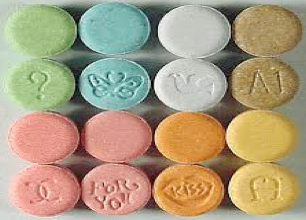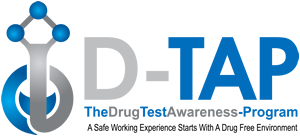Ecstasy (MDMA)
 What’s MDMA?
What’s MDMA?
MDMA (3-4 methylenedioxymethamphetamine) is a synthetic, psychoactive drug chemically similar to the stimulant methamphetamine and the hallucinogen mescaline. Street names for MDMA include Ecstasy, Adam, XTC, hug, beans, and love drug. In 2003, an estimated 470,000 people in the U.S. age 12 and older used MDMA in the past 30 days, a significant decrease from 2002*
Research in animals indicates that MDMA is neurotoxic; whether or not this is also true in humans is currently an area of intense investigation. MDMA can also be dangerous to health and, on rare occasions, lethal.
MDMA exerts its primary effects in the brain on neurons that use the chemical serotonin to communicate with other neurons. The serotonin system plays an important role in regulating mood, aggression, sexual activity, sleep, and sensitivity to pain.
Health Hazards
Cognitive Effects
Chronic users of MDMA perform more poorly than nonusers on certain types of cognitive or memory tasks. Some of these effects may be due to the use of other drugs in combination with MDMA, among other factors.
Physical Effects
In high doses, MDMA can interfere with the body’s ability to regulate temperature. This can lead to a sharp increase in body temperature (hyperthermia), resulting in liver, kidney, and cardiovascular system failure.
Because MDMA can interfere with its own metabolism (breakdown within the body), potentially harmful levels can be reached by repeated drug use within short intervals.
Users of MDMA face many of the same risks as users of other stimulants such as cocaine and amphetamines. These include increases in heart rate and blood pressure, a special risk for people with circulatory problems or heart disease, and other symptoms such as muscle tension, involuntary teeth clenching, nausea, blurred vision, faintness, and chills or sweating.
Psychological Effects
These can include confusion, depression, sleep problems, drug craving, and severe anxiety. These problems can occur during and sometimes days or weeks after taking MDMA.
Neurotoxicity
Research in animals links MDMA exposure to long-term damage to neurons that are involved in mood, thinking, and judgment. A study in nonhuman primates showed that exposure to MDMA for only 4 days caused damage to serotonin nerve terminals that was evident 6 to 7 years later. While similar neurotoxicity has not been definitively shown in humans, the wealth of animal research indicating MDMA’s damaging properties suggests that MDMA is not a safe drug for human consumption.
Hidden Risk: Drug Purity
Other drugs chemically similar to MDMA, such as MDA (methylenedioxyamphetamine, the parent drug of MDMA) and PMA (paramethoxyamphetamine, associated with fatalities in the U.S. and Australia) are sometimes sold as ecstasy. These drugs can be neurotoxic or create additional health risks to the user. Also, ecstasy tablets may contain other substances in addition to MDMA, such as ephedrine (a stimulant); dextromethorphan (DXM, a cough suppressant that has PCP-like effects at high doses); ketamine (an anesthetic used mostly by veterinarians that also has PCP-like effects); caffeine; cocaine; and methamphetamine. While the combination of MDMA with one or more of these drugs may be inherently dangerous, users might also combine them with substances such as marijuana and alcohol, putting themselves at further physical risk.
Extent of Use
Community Epidemiology Work Group (CEWG)**
CEWG members monitor drug use data sources for 21 metropolitan areas nationwide. In many of these areas monitored by CEWG members, MDMA, once used primarily at dance clubs, raves, and college scenes, is being used in a number of other social settings. In addition, some members reported increased use of MDMA among African-American and Hispanic populations.
The number of MDMA emergency department (ED) mentions decreased in nine CEWG areas from 2001 to 2002, with a significant increase reported only in New Orleans. The highest numbers of MDMA ED mentions in the 2002 period were in Philadelphia, Los Angeles, New York, Miami, San Francisco, Atlanta, Boston, and Detroit.
2004 Monitoring the Future (MTF) Survey ***
Tenth-graders showed significant changes in MDMA use and related attitudes from 2003 to 2004. They reported an increase (+3.0 percent) in perceived harmfulness of occasional MDMA use, and lifetime**** use decreased, from 5.4 percent to 4.3 percent. In addition, both 10th- and 12th-graders reported significant increases in their disapproval of trying MDMA once or twice over the same period.








